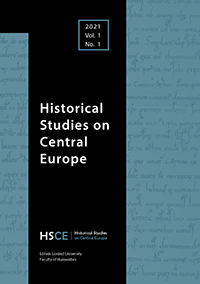Published 30-04-2021
Keywords
- autopsy,
- borderland,
- contact zone,
- contagion,
- vampire
How to Cite
Copyright (c) 2021 Ádám Mézes

This work is licensed under a Creative Commons Attribution-NonCommercial 4.0 International License.
Abstract
The present article traces the creation of the peculiar concept of the vampiric contagion or “vampirization” through the work of two official commissions which investigated vampires in Habsburg Serbia in 1732. Even though the importance of the documents prepared by the commissions has been duly recognized in intellectual and cultural histories, a closer look at the narrower historical context yields additional insights into how the figure of the vampire was construed. This approach also helps us do justice to the work of the first commission, led by contagion physician Glaser, which usually receives undeservedly little attention in the secondary literature. While acknowledging the Habsburg cameralistic state administration’s efforts at controlling and disciplining the borderland’s population, the article seeks to interpret the vampire as a product of a contact zone, co-created by the local Orthodox population and the borderland’s medical administration.

